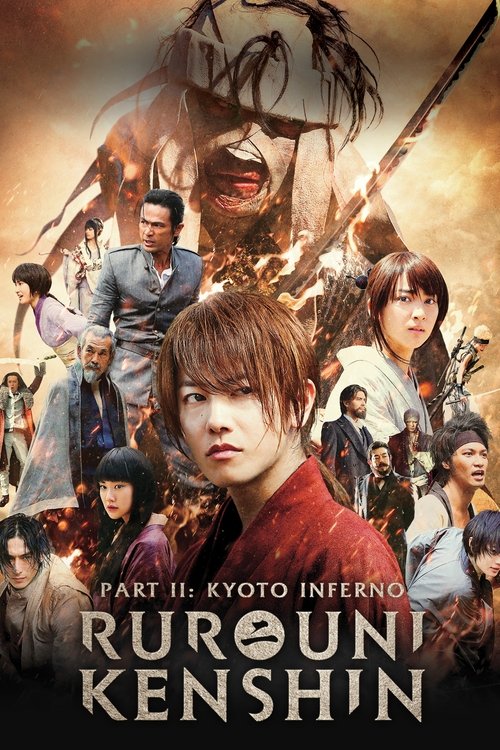
Title: Rurouni Kenshin Part II: Kyoto Inferno
Year: 2014
Director: Keishi Otomo
Writer: Keishi Otomo
Cast: Takeru Satoh (Kenshin Himura), Emi Takei (Kaoru Kamiya), Munetaka Aoki (Sanosuke Sagara), Kaito Oyagi (Yahiko Myojin), Yu Aoi (Megumi Takani),
Runtime: 138 min.
Synopsis: Kenshin has settled into his new life with Kaoru and his other friends when he is approached with a request from the Meiji government. Makoto Shishio, a former assassin like Kenshin, was betrayed, set on fire and left for dead. He survived, and is now in Kyoto, plotting with his gathered warriors to overthrow the new government. Against Kaoru's wishes, Kenshin reluctantly agrees to go to Kyoto and help keep his country from falling back into civil war.
Rating: 7.578/10